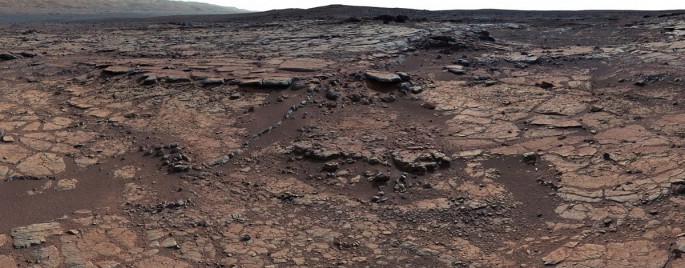The search for life on Mars continues unabated but has taken an interesting turn recently when one NASA probe searching for alien life on the red planet found another probe doing the same on the planet's surface.
The chance encounter came to light when the Mars Reconnaissance Orbiter caught sight of the Mars Curiosity rover, both of NASA origin, when the latter was making its way through what has been termed as the "Artist's Drive" on the lower slope of Mount Sharp, Express reported.
This is the first time the two NASA buddies have caught up with each other in 2015 though interestingly, as Discovery pointed out, the rover's tracks on the red soil were curiously missing. The rover's tracks were visible in all previous encounters, with the last happening around four months ago.
"Unlike other regions of for which Curiosity has traversed, here the rover tracks are not apparent, likely because the disturbed, underlying, dark sand is similar in tone to that on the surface," writes Nathan Bridges, HiRISE Investigation Scientist at NASA's Jet Propulsion Laboratory in Pasadena, California.
Scientists also believe the Martian wind could have erased the tracks on the loose sand.
The image taken by the Orbiter's high resolution camera on April 8 revealed the position of the surface rover with its shadow extending towards the right.
"Curiosity used a route through Artist's Drive on its way toward higher layers on Mount Sharp after examining exposures of the mountain's basal geological unit at Pahrump Hills, said Guy Webster of NASA's Jet Propulsion Laboratory.
The Curiosity rover has been tasked with the job of searching for life on the red planet since August 6 2012. The rover too hasn't disappointed either as it recently beamed back evidence of the existence of brine on the planet.
The rover has found the evidence of perchlorate salt near the surface of the planet. The perchlorate salt lowers the freezing point of water and absorbs water vapour from the atmosphere to form brines, stated The National.



























